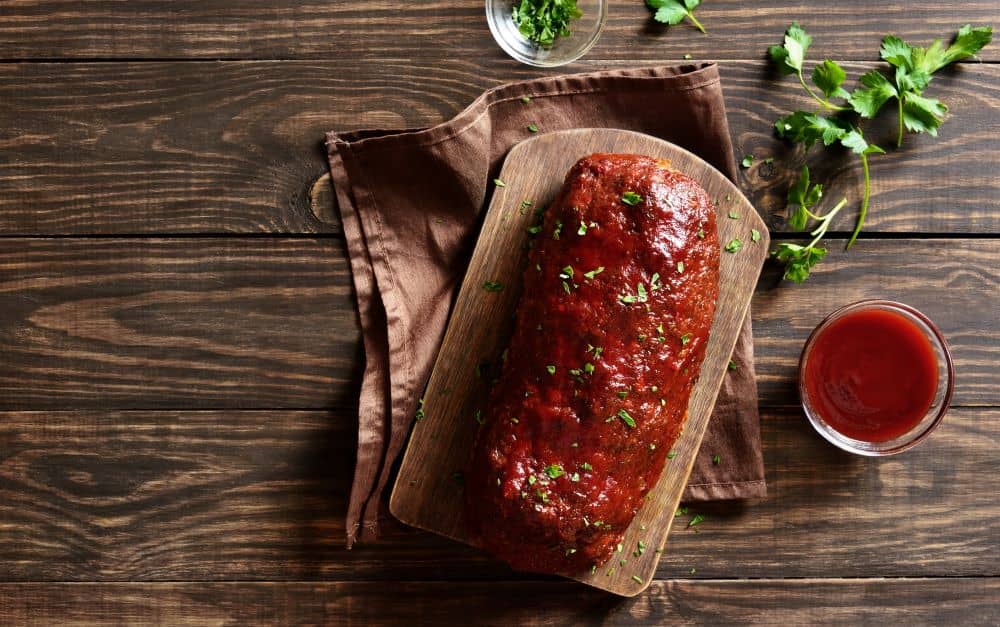How to Get the Family Brought Into Healthy Meals
It’s hard enough to make healthy meals for yourself when all you’re craving is pizza and fries. When you want to eat healthfully as a family, it can be a nightmare!
Everyone is in the mood for something different, the kids are being picky about anything green, and you’re so stressed that ordering takeout is seeming like a better and better idea.
Is it possible to make healthy meals for the whole family? The answer is yes!
It’s All About Moderation
Healthy family meals are possible, even when the kids only want chicken nuggets. Luckily, it’s possible to handle a picky eater and still keep your family meals healthy for everyone. The key is moderation.
Many people think that healthy eating requires you to completely cut out everything from your diet that isn’t considered healthy food, such as sugar, fats, and carbohydrates. While the most successful diets are those that focus primarily on, whole, clean foods, there’s still plenty of wiggle room if you keep your portion sizes under control.
Research shows that the key to moderation is awareness. People who are educated about healthy portion sizes are better able to monitor their behaviour and successfully moderate their food intake. As a parent, you can make your mealtimes healthier by using meals as an opportunity to teach the family about healthy eating and portion sizes. These lessons will help them make good choices throughout the rest of their lives!
Tips to Eat Healthy as a Family
Want to know some other ways to help your family eat well? Keep reading for 6 tips for healthy family eating!
1. Talk About Your Days
This may seem like strange advice when it comes to healthy eating. However, one study demonstrated that children and teens are more likely to successfully moderate their food intake when their parents or caregivers engaged with them emotionally. Stress and anxiety are common causes of overeating, so you can prevent this by using mealtimes to talk to your kids about their days and help them process their emotions.
Chatting during mealtimes has another great benefit for healthy eating. If you’re conversing while you eat, you eat more slowly. Scientists agree that the speed at which you consume your food strongly correlates with how much you eat. Eating more slowly allows you to feel full faster, meaning that you’ll eat less. This means that getting your family talking during mealtimes can make a major difference when it comes to moderating their food intake.
2. Schedule Regular Mealtimes
If your family knows exactly when the next meal is coming, they will be less likely to engage in excessive snacking between meals. You can even schedule snacks for mid-morning and mid-afternoon to keep the hungry horrors at bay! Scheduled eating times have the added benefit of giving everyone a constant energy source throughout the day. This keeps your metabolism readily engaged and makes it easier for your body to break down calories and put them to optimal use.
3. Cut Out Sugary Drinks
Scientists and nutritionists agree that sugary drinks are one of the biggest culprits standing in the way of healthy eating. Sodas, energy drinks, and certain juices are filled with much more sugar than most people realize, and kids are particularly susceptible to chugging these drinks with abandon. The sugar in these drinks contributes significantly to obesity and cardiovascular issues.
There are lots of substitutions for sugary drinks. Water is the best choice, but there are other ways to replace sodas and still engage your sweet tooth. Try making homemade smoothies or unsweetened teas to keep hydrated, get valuable nutrients, and avoid sneaky sugar.
4. Replace Refined Grains
If you’re a carb lover, the idea of cutting out pasta may sound difficult. Unfortunately, grains like regular pasta and white rice are full of refined carbohydrates that contribute to heart disease, obesity, and even cancer.
Try swapping out your usual pasta or rice with a whole grain option. You can even substitute carbs with vegetables; for example, you can use spiralized zucchini instead of pasta or riced cauliflower instead of white rice.
5. Make Shopping and Cooking a Family Activity
Knowledge is key to making good food decisions, so why not get the whole family involved in meal preparation? The kids will enjoy making food choices for themselves, meaning they’ll be more likely to try new and healthy foods. Plus, it’s a great opportunity to teach them how to identify and prepare healthful foods on their own!
6. Don’t Skimp on Herbs and Spices
Healthy doesn’t have to mean bland! If your pantry is well-stocked with a variety of herbs and spices, you can add tons of flavour to healthy meals without relying on butter and salt. Plus, many spices have their own added health benefits. For example, sage can improve brain function, turmeric is a natural anti-inflammatory, and rosemary can suppress the symptoms of allergies.
Healthy Meal Ideas
Want some healthy meal recipes that your family is sure to love? How about this tasty mac and cheese? This new twist on a classic is great for meat-free Mondays!
Healthy Mac and Cheese
Ingredients:
- 1 ½ cups uncooked pasta
- Half a small cauliflower
- 2 medium zucchini
- 2 Tbsp butter or your preferred oil
- 2 tbsp plain flour
- 1 medium onion finely diced
- 1 cup milk
- 1 cup grated cheese
Instructions
- Cook the pasta as per the packet directions, drain and set aside.
- Roughly chop the cauliflower, peel the zucchini, roughly chop and steam with the cauliflower until tender.
- While the cauliflower is cooking start on the roux sauce (white sauce). Heat butter/oil in a saucepan. Add onion and sauté until softened and translucent.
- Add the flour and cook for around 2mins whilst stirring. Gradually add the milk.
- Bring the sauce just to a boil then reduce the heat.
- Stir in ¾ Cup of the grated cheese; once it melts through the sauce, remove from heat.
- Once the cauliflower and zucchini are tender, drain, then puree.
- Stir the vegetable puree into your cheese sauce. Combine your sauce with the pasta, then pour the pasta and sauce mixture into a greased ovenproof dish. You can top it with the remaining grated cheese.
- Bake for around 20mins at 180 degrees celsius, until the cheese on top, is melted, bubbling and golden
For you meat-eaters, this twist on a classic meatloaf recipe is packed with hidden vegetables and will have your kids licking the plate! Plus, it’s simple to make!
Hidden Veggie Meatloaf
Ingredients:
- 1/2 pound ground meat
- 1 slice bread, diced
- 1 large egg, beaten
- 1/4 cup shredded carrot
- 2 tablespoons finely chopped onion
- 2 tablespoons finely chopped red pepper
- 2 tablespoons finely chopped celery
- 1/2 teaspoon salt
- Dash of pepper and garlic powder
- 5 tablespoons ketchup, divided
Instructions:
- Preheat your oven to 350°.
- In a large bowl, combine all of your ingredients, mixing them well.
- Form the ingredients into a loaf in an ungreased loaf pan.
- Spoon remaining ketchup sauce over the loaf.
- Bake for 45-50 minutes until meat is no longer pink.














